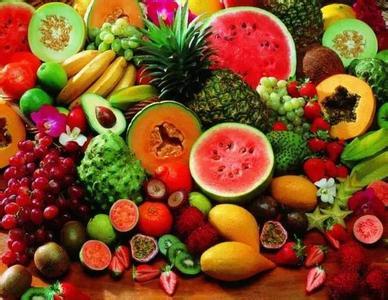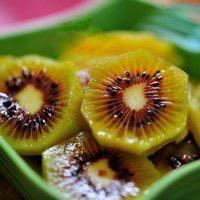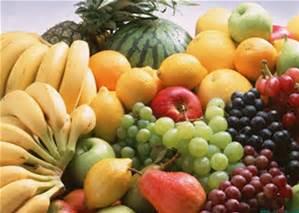Can diabetics eat fruits with high sugar content?
Fruit has always been a diabetic headache, in fact, for most diabetics, it is entirely possible to do both good control of blood sugar, mailboxes receive the benefits of fruit and fun, boiled down to a total of sixteen words: "according to the condition of the time to master the choice of types to control the number."
First, diabetic patients can eat fruits in moderation after stable blood glucose control, i.e., when the 2-hour postprandial blood glucose is below 11.1 mmol/L and glycosylated hemoglobin is less than 7.0%; if the blood glucose level is higher and fluctuates greatly in the near future, the fruits are not consumed for the time being.
Second, fruits should not be eaten in combination with regular meals, but as an additional meal, which can be consumed at 10 a.m. or around 4 p.m.
Third, you should choose fruits with relatively low sugar content and a slower rate of blood glucose elevation, such as strawberries, grapefruit, watermelon, kiwi, etc., and also make choices based on your own practical experience.
 Low-sugar fruits: strawberries, grapefruit, kiwi, watermelon.
Low-sugar fruits: strawberries, grapefruit, kiwi, watermelon.
Medium sugar fruits: apples, peaches, pears.
Fruits on the high sugar side: pineapple, dragon fruit.
High-sugar fruits: ripe bananas, lychees, grapes, sugar cane, dates.
Fourth, diabetics should not consume more than 200 grams of fruit per day, while reducing 25 grams of staple food accordingly. This is a food equivalence exchange approach to keep the total daily caloric intake of the patient constant.
Please like, welcome to follow "Yoga Sutra", every day to share the knowledge of yoga and health, with the hand than the heart!
First of all, diabetics do not have absolute dietary taboos, even if the sugar content of the fruit is very high, you eat a small bite each time, the impact on blood sugar will not be too great. However, from a health point of view, it is still recommended to eat fruits with high sugar content with caution, people are not sages, food and color off the sad, eat a mouthful can not help but eat a mouthful, and finally found that there is no control, the blood sugar naturally soared.
In the Chinese Guidelines for the Nutritional Management of Diabetes, fruits are categorized as carbohydrates, rather than fruits and vegetables, as in the Dietary Guidelines for Chinese Residents. This means that fruits are elevated to the top of the list of factors that affect blood sugar. So how do you eat fruit?
Choosing the right fruits
Suitable fruits are those with relatively low sugar content such as: grapefruit, apples, oranges, strawberries, hawthorn and other fruits with low sugar content.
Choose the right time slot
Eating fruits should not be chosen with the main meal, but rather as an additional meal between meals and before going to bed, on top of a smaller main meal. This will keep your blood sugar stable and allow you to savor the delicious fruits.
Choosing the right amount of food
The amount of food is the key, each time should not eat more, for example, kiwi can eat a small, and then eat more is not good. There is a platform for checking diabetes dietary taboos, so you can go and look for it. I won't say the name, otherwise the headline should say that I advertise again. You can see my introduction.
Hello, diabetics are allowed to eat kiwifruit, each 100 grams of kiwifruit contains about 14 grams of sugar, which is relatively low in sugar content among fruits and suitable for diabetics to eat. Kiwifruit fruit contains vitamin B1, C, carotene, as well as calcium, phosphorus, iron, sodium, potassium, magnesium, chlorine, pigment and other components, and its protein is rich in amino acids, which can replenish the lack of nutrients in the body of diabetic patients. However, it should also be noted that kiwifruit can not be eaten with milk. Because the vitamin C in kiwifruit is easy to coagulate with the proteins in dairy products, which not only affects digestion and absorption, but also causes bloating, abdominal pain and diarrhea, so after consuming vitamin C-rich kiwifruit, you must not drink milk or eat other dairy products immediately.
Kiwi. Key points for lowering sugar: inositol, vitamin C, dietary fiber
The inositol in kiwifruit is a natural sugar alcohol, which is good for regulating sugar metabolism. Kiwifruit contains vitamin C and other vitamins, comprehensive nutrition, belong to the dietary fiber-rich low-fat food, is a more ideal fruit for diabetics.
Sugar-lowering diet
Kiwifruit has a relatively low glycemic index. Cooking the soup with silver fungus and sweetener has the effect of controlling elevated blood glucose, moistening the lungs, nourishing the lungs, nourishing Yin and nourishing the stomach. It is suitable for diabetic patients with irritable heat, thirst and loss of appetite.
Benefits for complications
Vitamin C in kiwifruit helps diabetes increase its resistance to infection.
Kiwi juice blocks the synthesis of carcinogens in the body.
Diabetics can consume fruit, but need to pay attention to four aspects: 1. Grasp the time to eat fruit; 2. Fruit should generally be used as a meal, eaten in the middle of two meals or one hour before bedtime; 3. Grasp the type of fruit eaten. You should choose fruits with relatively low sugar content and a slower rate of blood glucose elevation; 4. Grasp the number of fruits eaten. Diabetic patients can eat about 200g of fruit per day, while reducing about 25g of staple food, so that the total daily intake of calories remains unchanged.
Ranking the sugar content of common fruits
Fruits with a sugar content between 4% and 7%: watermelon, strawberries, blancmange, etc.
Fruits with a sugar content between 8% and 10%: pears, lemons, cherries, cantaloupe, grapes, peaches, pineapple, etc.
Fruits with a sugar content between 9% and 13%: apples, apricots, figs, oranges, grapefruit, lychees, etc.
Fruits with a sugar content of 14% or more: persimmons, cinnamon, bananas, prunes, pomegranates, etc.
What fruits are good for diabetics?
The choice of fruits for diabetics is based mainly on their sugar and starch content, as well as the glycemic index of a variety of different fruits.
Recommended choices: Fruits containing less than 10 grams of sugar per 100 grams of fruit, including cucumber, watermelon, oranges, grapefruit, lemons, peaches, plums, apricots, loquats, pineapples, strawberries, cherries and so on. Such fruits can provide 20-40 kcal of energy per 100 grams.
Choose with caution: Fruits containing 11-20 grams of sugar per 100 grams of fruit, including bananas, pomegranates, melons, oranges, apples, pears, lychees and mangoes. Such fruits provide 50-90 kcal of energy per 100 grams.
Not suitable for use: fruits containing more than 20 grams of sugar per 100 grams of fruit, including red dates, red fruits, especially dried dates, honey dates, persimmons, raisins, dried apricots, dried cinnamon and other dried fruits, as well as dried fruits should be prohibited from consumption. Fresh fruits with particularly high sugar content, such as red Fuji apples, persimmons, Laiyang pears, Feicheng peaches, cantaloupe, rose-scented grapes, winter jujubes, yellow peaches, etc., should also not be consumed. Such fruits provide more than 100 kcal of energy per 100 grams.
What can I eat to lower my blood sugar?
Low-fat, low-calorie foods such as celery, fungus, shiitake mushrooms, and green leafy vegetables are known to lower blood sugar.
Doctor's Recommendation:
1. Do not overeat, live a regular life, eat to chew slowly, eat more vegetables, as far as possible, do not eat in a short period of time containing glucose, sucrose amount of food, which can prevent blood sugar in a short period of time, a rapid rise in the protection of pancreatic function is helpful, especially with a family history of diabetes must be remembered!
2. Avoid obesity, maintain an ideal and appropriate body weight, and strengthen physical exercise. Eat less fried, deep-fried, crispy and high-fat foods such as pork skin, chicken skin and duck skin. Diet should not be too salty and eat less food with high cholesterol content, such as cashew flower, liver, kidney and other animal offal food. It is not suitable to eat refined grains; crab roe, fish eggs, chicken skin, pig skin, pig intestines; peanuts, melon seeds, walnuts, pine nuts, sugar cane, fruits, potatoes, taro, sweet potatoes, lotus root, starch, water chestnuts and so on.
3. Eat regularly and in accordance with the planned portion sizes for each meal, and do not increase or decrease the portion sizes arbitrarily. Always use foods with high fiber content, such as unprocessed fruits and vegetables.
4. Steaming, boiling, mixing, shabu-shabu, roasting, grilling, braising, stewing, brining, etc. should be used for cooking. Do not be too salty, salt intake of 6 grams or less is appropriate, cooking preferably with vegetable fats and oils.
5. Foods with high starch content and Chinese and Western snacks should be consumed according to planned portion sizes and should not be eaten at random to avoid over-absorption. Eat less food with refined sugar, such as condensed milk and candied fruit.
6. Avoid spicy; quit smoking and limit alcohol.
Don't forget to like it!
This question and answer are from the site users, does not represent the position of the site, such as infringement, please contact the administrator to delete.